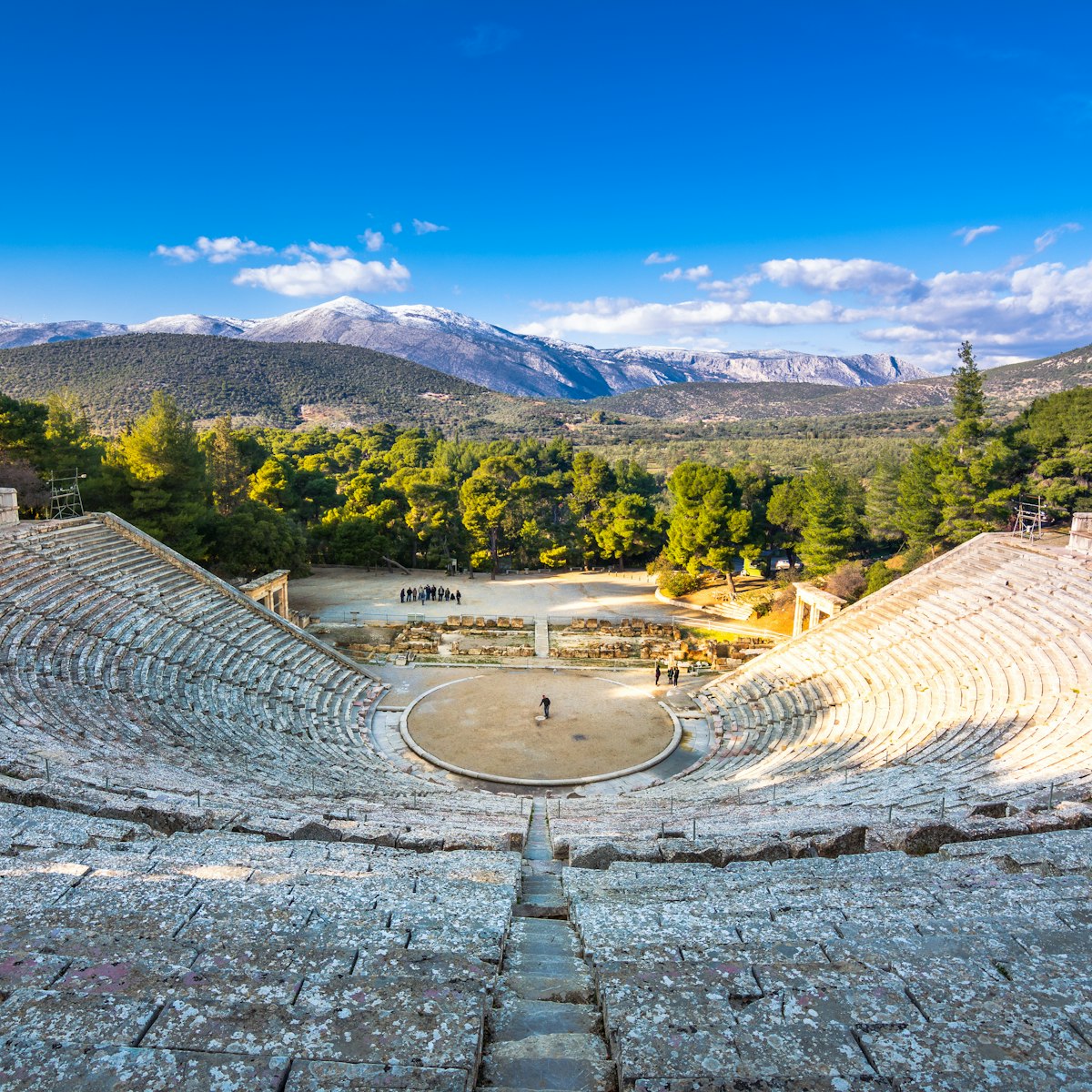Ancient Nemea was once the venue for the biennial Nemean Games, held in honour of Zeus. Three original columns of the imposing 4th-century-BC Doric Temple of Zeus survive, and the on-site museum displays rich finds from the area. The atmospheric stadium is nearby; once connected to the sanctuary by a sacred road, it plays host to a resurrected version of the Games. It's located 31km southwest of Corinth and 4km northeast of modern Nemea.
Like Ancient Olympia, Nemea was not a city but a sanctuary of Zeus. The Nemean Games, held in the stadium here, were hosted by the nearby city of Kleonai and became one of the great Panhellenic festivals. It was also around here that Hercules carried out the first of his labours – the slaying of the lion that had been sent by Hera to destroy Nemea. After Hercules had killed the lion by lifting it off the ground and choking it to death, the lion became the constellation Leo (each of Hercules' 12 labours is related to a sign of the zodiac).
It's worth visiting the site’s museum before seeing the remains of the temple. It has two models of the ancient site – the first shows what it would have looked like at the site's zenith around 300 BC, the second in AD 500, when a Christian basilica and community had developed around the ruined temple – as well as ancient paraphernalia from the Games and treasures from the area's Mycenaean tombs. The jewel of the collection, quite literally, is the Gold of Aidonia, an exquisite assortment of gold rings, seals and beads from the site of Aidonia, near Nemea. Don’t miss the video that explains the extraordinarily advanced race-starting mechanism or the sad story of the last Christian inhabitant of the settlement.
At the temple site, the three original columns of the 4th-century-BC Temple of Zeus have been joined by six more, reassembled by an American team. Other ruins include a hostelry and, under a roof, a bathhouse, which has some beautifully preserved washbasins. The athletes probably oiled up here before competition.
The stadium is 300m away along the road. There's a fantastic view of it in all its glory from the path that skirts it through the pine trees. Alternatively, enter it the way the athletes would have done, through the atmospheric and archaeologically important tunnel hidden behind the columns by the site entrance. The athletes’ starting line is still in place, together with the distance markers. Look out for ancient graffiti in the tunnel. Resurrected in 1996, the two-day Modern Nemean Games (www.nemeangames.org) occur each Olympic year in June.
Buses to/from Corinth Isthmus (around €5, one hour, four to five daily, one Sunday) stop on request outside the site on the way to modern Nemea, about 4km northwest of the site.
Note that closing hours alter substantially through the winter period according to sunset times.







